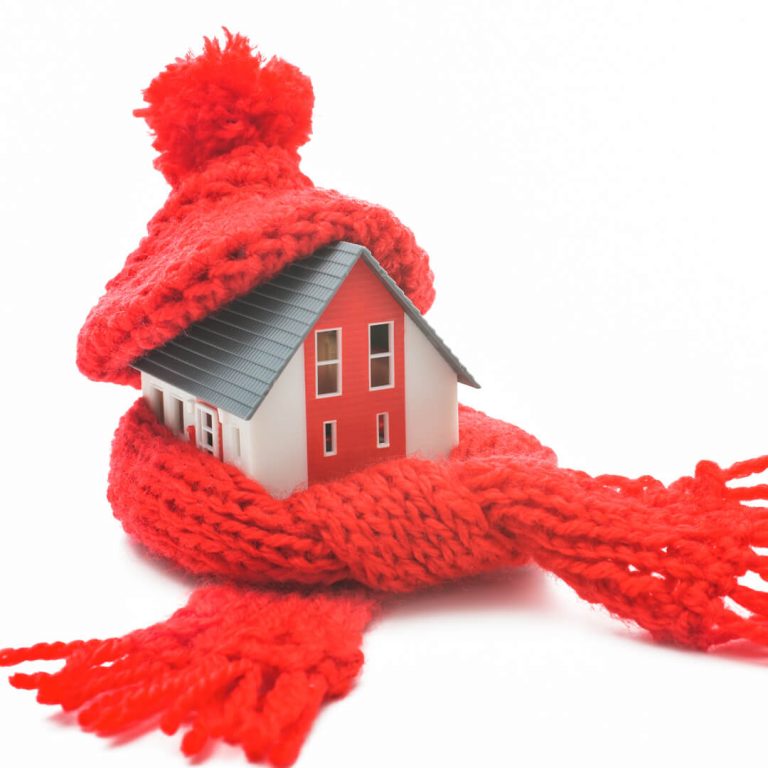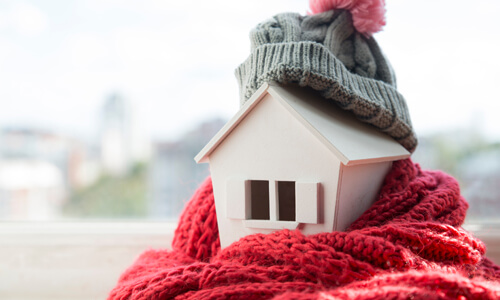The average home sales price recently topped $446,000, according to the U.S. Department of Housing and Urban Development (HUD). That’s a significant investment for any home buyer—and one worth protecting.
Preparing for winter is an important way to protect your investment; the season can be a difficult one on your home, no matter where you live. Even temperate climates experience unexpected or occasional winter storms that can damage your home, especially if it’s not ready for such events.
In addition to maintaining your home’s value, there are some added money-saving bonuses that come from these 12 winterizing tasks: Several reduce the risk of claims against your homeowners insurance, which can consequently increase your premium, and others improve your home’s energy efficiency, which means lower utility bills.
Exterior Winterizing
Start your winter prep by completing these outside chores before the weather gets too cold or inclement to tackle them:
- De-clog your gutters. If you let leaves and other debris build up in your gutters, water won’t drain away from your home’s foundation, fascia boards and siding as intended, which can lead to cracks in your foundation, leaks in your walls, rotting wood and even damaged landscaping.
- Seal external holes and cracks. To keep out the cold and give your furnace a break, walk the outside of your home and apply sealing caulk to places where air can seep it, including gaps around your hose faucets and where the seams between your foundation and siding have been compromised.
- Trim weak tree branches. Heavy winds, ice and snow can all easily snap weak or dead limbs from the trees on your property. If you don’t remove them before harsh weather does, they might damage cars or hurt people on their way to the ground, leading to insurance claims where you need to pay out a deductible and risk a premium increase.
- Fix broken or loose stair railings. When snow and ice cover the steps leading to your front or back door, people naturally grab hold of the stair railings for support so that they don’t fall and hurt themselves. Make sure your railings are sturdy enough to provide that support in order to avoid slip-and-fall insurance claims.
- Cover or store outdoor items. Unless you’re going to use them over the winter months, give your outdoor grill, furniture and other décor some protection by either covering them or putting them in storage.
- Get ready for winter precipitation. If you own one, check that your snowblower is in good working order. Otherwise, place shovels where you can quickly locate them in case of snow or ice and maybe pick up a bag or two of ice melt the next time you’re at the hardware or home improvement store.
Interior Weather Prepping
With the exterior of your home taken care of, turn your attention to these inside chores:
- Insulate your pipes. In the winter, water pipes that run along exterior walls or are located in unheated spaces like your garage can freeze and then burst when the temperature takes a deep dive. Help avoid a flooded home from burst pipes by covering them with insulating pipe wrap or foam pipe covers.
- Test your smoke and carbon monoxide detectors. With your furnace running and perhaps the fireplace lit, the best way to avoid a home fire and protect against carbon monoxide poisoning is to make sure you have fresh batteries in all of your detectors and that they are fully operational.
- Install weatherstripping and door sweeps. Have you ever noticed a cold draught of air coming from around your windows or doors? Then, it’s time to replace the weatherstripping. Another quick way to keep cold air out is to install a door sweep underneath the doors leading into your home.
- Clean out your fireplace. Before you light the first fire of the season, take a look inside your fireplace, checking for any animal nests and sweeping or vacuuming up any dirt and fire residue.
- Reverse your ceiling fans. Reset your ceiling fans to turn clockwise in winter so that they push hot air down and help keep your living spaces warm without turning up your thermostat.
- Replace your air filters. While you’re winterizing, don’t forget to switch out your home’s air filters, which will help your furnace work more efficiently.
Whether you’re a new homeowner or a veteran one, adding these routine maintenance tasks to your fall to-do list is a smart way to maintain your home’s value and ensure that winter weather doesn’t damage it or unnecessarily run up your heating bill.
Editor’s note: Quorum is not affiliated with any of the companies mentioned in this article and derives no benefit from these businesses for placement in this article.







Comments Section
Please note: Comments are not monitored for member servicing inquiries and will not be published. If you have a question or comment about a Quorum product or account, please visit quorumfcu.org to submit a query with our Member Service Team. Thank you.